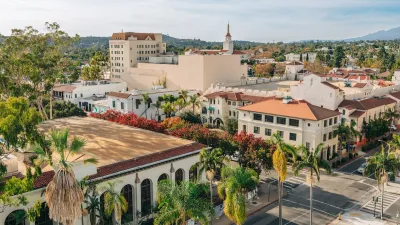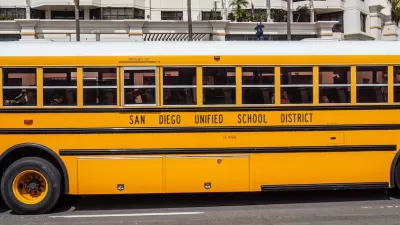In the next 20 years, the D.C. area is expected to have nearly 3 million job openings. With the resulting demand for new, diverse and more affordable housing outpacing supply, some fear that the city’s housing deficit will derail its robust economy.
In their second entry in a 5-part series on workforce housing in the Washington D.C. area, authors Lisa Sturtevant and Agnes Artemel contend that "housing the workforce" will be imperative to guaranteeing Washington's future economic success. They argue that the city's projected housing deficit could lead to higher rents, more traffic congestion and strained transit systems -- in a region that is severely dependent on non-resident workers and commuters.
Citing forecasts from the George Mason University Center for Regional Analysis, Sturtevant and Artemel point to an estimated 25% gap in the future provision of housing. This statistic is based on projected job growth requiring "over 700,000 new housing units by 2030", and the current pace of construction, which supplies only 28,000 housing units per year instead of the needed 36,500 units.
The authors examine the role that the public and private sectors will need to play in helping to solve this dilemma. "Most local governments are not planning enough housing for their future workers, and may hinder new housing with regulations on new development. Meanwhile, builders need to recognize the need for more multi-family housing and smaller, more affordable owner and renter homes in the region."
FULL STORY: Washington's economic future depends on more housing

Study: Maui’s Plan to Convert Vacation Rentals to Long-Term Housing Could Cause Nearly $1 Billion Economic Loss
The plan would reduce visitor accommodation by 25,% resulting in 1,900 jobs lost.

North Texas Transit Leaders Tout Benefits of TOD for Growing Region
At a summit focused on transit-oriented development, policymakers discussed how North Texas’ expanded light rail system can serve as a tool for economic growth.

Why Should We Subsidize Public Transportation?
Many public transit agencies face financial stress due to rising costs, declining fare revenue, and declining subsidies. Transit advocates must provide a strong business case for increasing public transit funding.

How to Make US Trains Faster
Changes to boarding platforms and a switch to electric trains could improve U.S. passenger rail service without the added cost of high-speed rail.

Columbia’s Revitalized ‘Loop’ Is a Hub for Local Entrepreneurs
A focus on small businesses is helping a commercial corridor in Columbia, Missouri thrive.

Invasive Insect Threatens Minnesota’s Ash Forests
The Emerald Ash Borer is a rapidly spreading invasive pest threatening Minnesota’s ash trees, and homeowners are encouraged to plant diverse replacement species, avoid moving ash firewood, and monitor for signs of infestation.
Urban Design for Planners 1: Software Tools
This six-course series explores essential urban design concepts using open source software and equips planners with the tools they need to participate fully in the urban design process.
Planning for Universal Design
Learn the tools for implementing Universal Design in planning regulations.
City of Santa Clarita
Ascent Environmental
Institute for Housing and Urban Development Studies (IHS)
City of Grandview
Harvard GSD Executive Education
Toledo-Lucas County Plan Commissions
Salt Lake City
NYU Wagner Graduate School of Public Service





























